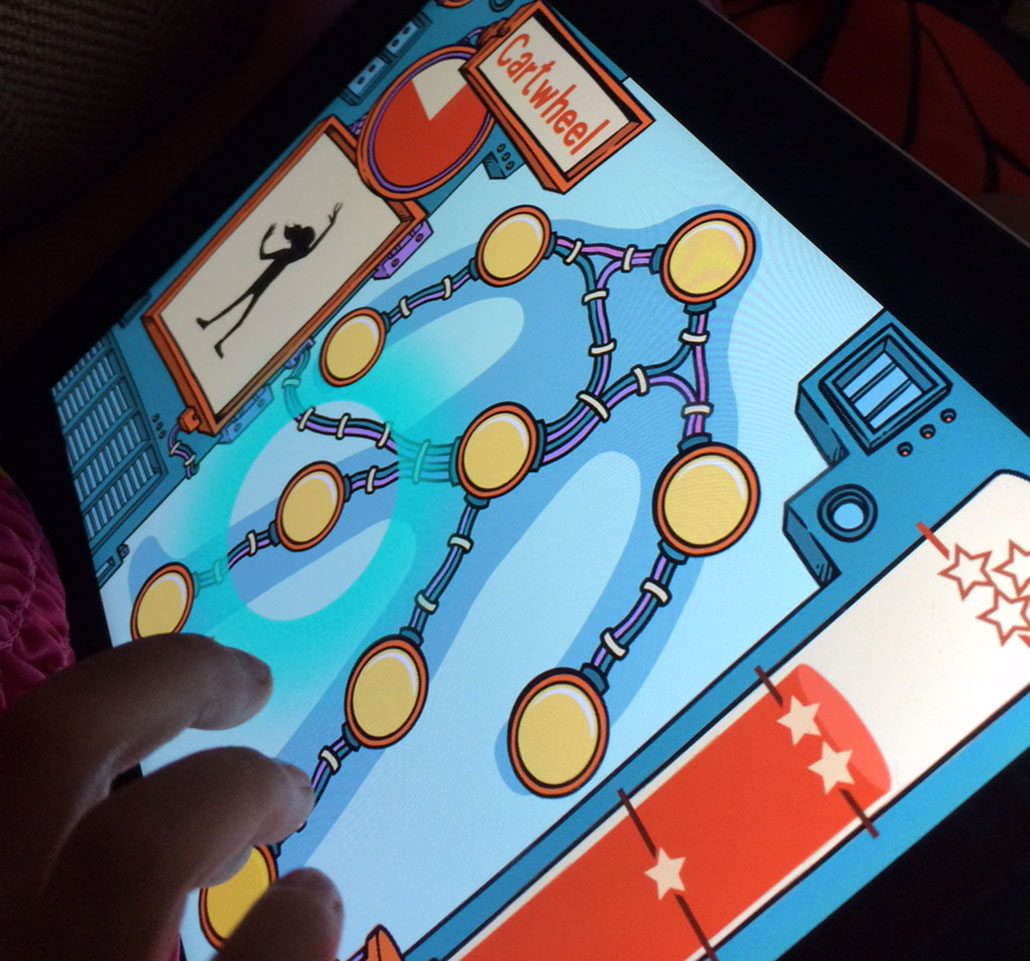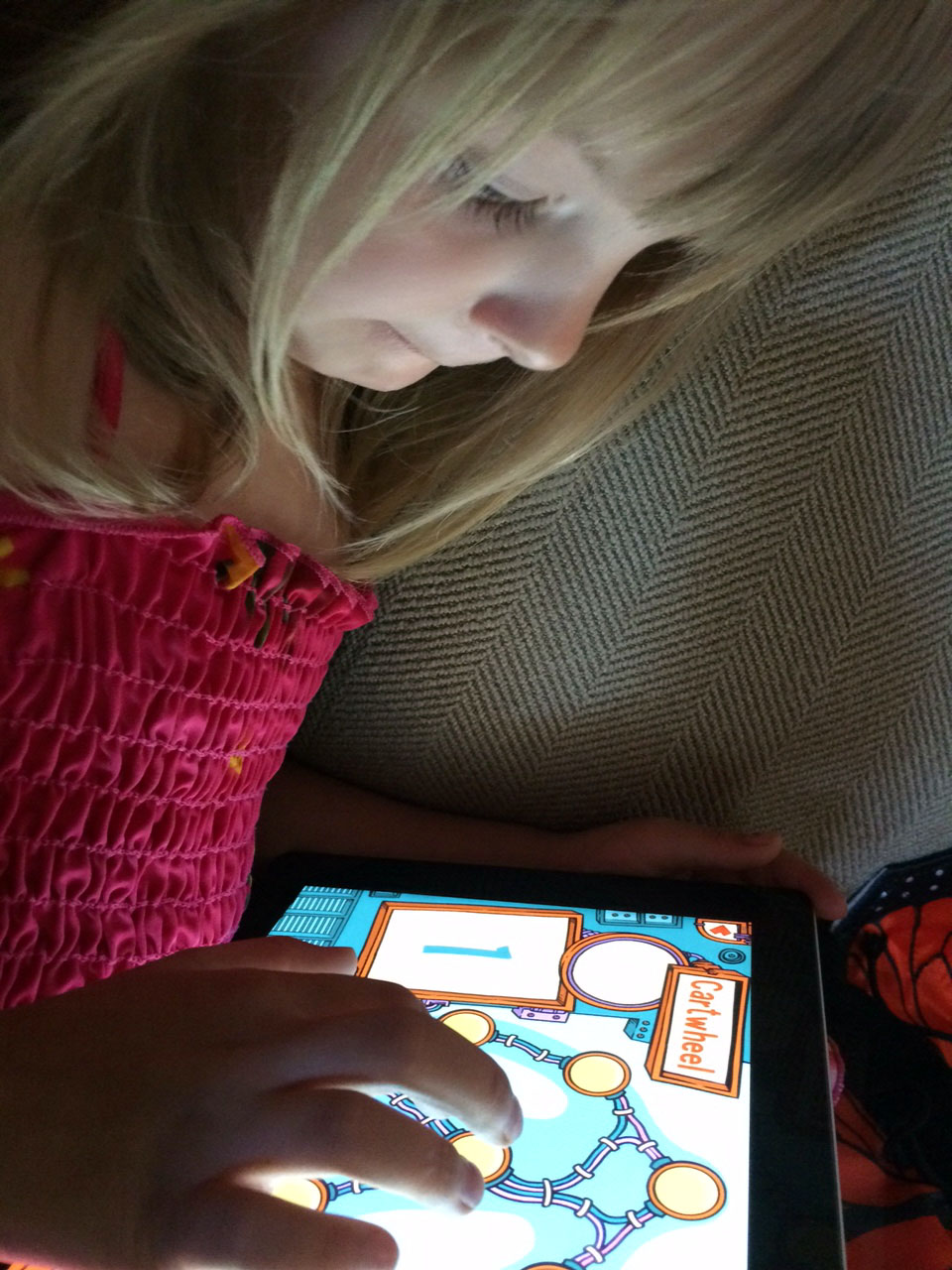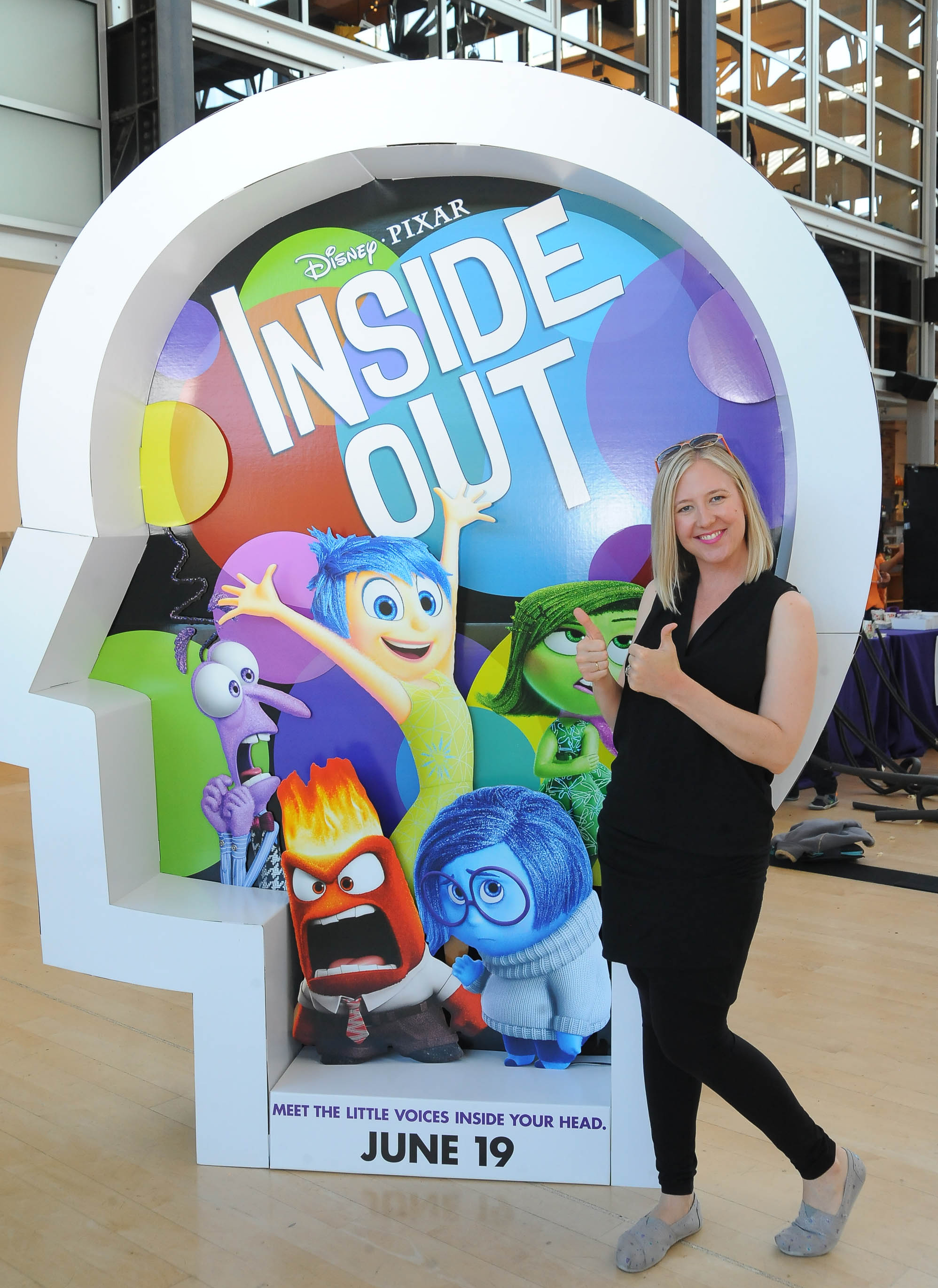
Brainventures is available today for the iOS.
Erica Warp has been waiting three years for Pixar’s latest movie “Inside Out” to come out. It’s everything that this neuroscientist and artist loves.
“’Inside Out’ brings our adaptable brain to life on the big screen,” she wrote recently. “Islands in [the lead character’s] mind get destroyed and new ones are built. Memories fade and new ones are formed. Our brains ‘rewire’ and make new connections throughout our entire lives, but we do not usually get to see these changes.”
It seemed the perfect time for Warp’s company, Kizoom, to launch what they call their “most ambitious” game yet – Brainventures.
In the game, kids, ideally aged 7-10, take on the role of brain cells, helping their boy or girl character develop new skills while encountering other neurons. The skills develop as children play a series of mini-games within the game that test pattern recognition and hand-eye coordination. Although built for kids who can read, my pre-k 5-year-old also enjoyed the games even as the narrative parts of the game were above her understanding.

Although aimed at kids 7-10 at least one 5-year-old liked Brainventure’s mini-games.
Brainventures is the result of a year of development that took place in the Kizoom studios as well as the educational game accelerator co.lab. Kizoom had already built two games and so they used their time at co.lab to focus on their new product and ensure it was ready.
“We spent the first two months meeting with product people … and going through our core game loops, how the education and entertainment balance each other, getting rid of text – really focused on making our game engaging and making our game something that people will really come back to,” Warp said.
She credited co.lab, a project of Zynga’s non-profit and the NewSchools Venture Fund for connecting the game developers with product development experts from Zynga and elsewhere. She said the outside support helped the still small team tackle the core challenges of making an effective game.
“Taking the expertise that Zynga has in building commercially successful, engaging games and trying to port that – as much as is relevant – into what we are doing,” she said.
She adds that they also spent time with neuroscience experts to ensure they did not lose the core mission of the game at the alter of fun, saying, “There’s often times push and pull between what is engaging and what is educational.”
Still, Warp acknowledged that Brainventures is aimed at the consumer market and so needed to compete in online stores crowded with tens of thousands of games that claim to be educational.
“We are targeting the consumer space and not the school market at the moment and so we are really competing with games and apps that are really, you know, not educational. So we need something that has a really high production value, engagement value,” she said.
Many of those games are self-styled “brain trainers” and that is NOT what Brainventures is about. In fact, differentiating her new game from the thousands of quiz apps that are supposed to improve memory is something she admits is “one of our biggest challenges.”
Another challenge? “It’s not on every parent’s mind to teach their kids about the brain,” she said.
The answer, for Warp, is to become “evangelists about brain education.”

Warp says the new Pixar film “Inside Out” is the perfect backdrop to launch Kizoom’s most ambitious game yet.
Warp, who holds a PhD in neuroscience from Berkley, is someone uniquely positioned to tackle the job.
“I had really been going back and forth between arts and science since college and this is the first thing that has ever really made sense in my career,” she said. “I’ve always been about science communication and even my art was about channeling the excitement I felt looking down the microscope.”
And when she gets going about the brain, the excitement is clear as she breathlessly described how “The brain is the closest thing in our bodies that is truly linked to our selves. It’s how we sense the world, it’s how we think and solve problems and create things.”
And she has come to see her game as a way to not just make kids aware of their brains but to build what has come to be called a “growth mindset.”
“Research has shown kids that understand that their brain makes new connections when they try things that are hard, they persevere better,” she said. “Their intelligence and their abilities, all of those things that their brain controls are within their reach to make those things stronger. That’s a hugely powerful.”
Kizoom’s work is based on much of the research and work of Carol Dweck, the noted Stanford professor who stresses that systems should inspire young people to respond to adversity or a setback rather than be defeated by it.
Dweck told Education World, “Students who are taught that their performance simply measures their current skills can still relish learning challenges, for mistakes and setbacks should not be undermining.”
Or for more on the idea of a growth mindset, there is this talk with Dweck:
Warp’s focus on this growth mindset is actually part of the evolution of the company’s thinking about what it’s role is and how best to inspire kids. When she started the company she said, “Our goal was getting kids interested in science by teaching them about what we think is the coolest science there is and we know kids think is really cool and is related to them and that we can make fun. That was a really great mission and it led to our first app. Then we became aware of the research on growth mindset and realized the great potential that brain education could have on kids’ education and lifelong development.”
The result is Brainventures and with the success of “Inside Out” at the theater, Warp hopes kids and parents will be looking for a way to truly appreciate the complexity and flexibility of the human brain.
